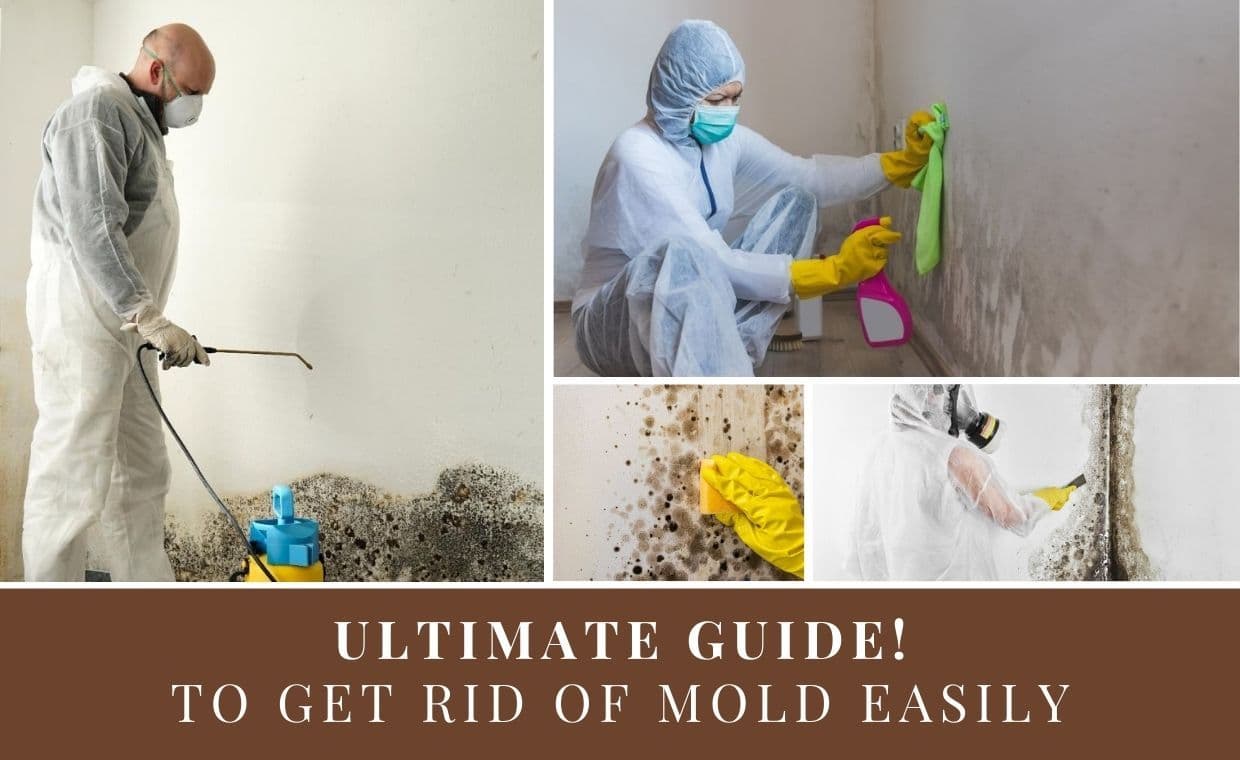
Table of Contents
Quick Summary
- Introduction on Mould Growth Risks
- Causes of Basement Mould:
Common causes include flooding, water leaks, poor drainage, and high humidity. Moisture is the primary factor that allows mould spores to grow and spread. - Identifying Mould:
Mould can be detected visually (black spots or stains), by smell (musty odour), through peeling paint or condensation on walls, or by testing with bleach. - Tools & Materials Needed:
Essential items include gloves, masks, bleach, borax, cleaning agents, sponges, screwdrivers, and proper ventilation equipment. - 8 Steps to Remove Mould:
- Assess the situation – Identify affected areas and surface types.Gear up – Wear protective gear to prevent spore exposure.Ventilate – Open windows or use exhaust fans for airflow.Prepare cleaning solution – Mix bleach, borax, or essential oils with water.Clear the area – Remove contaminated items or furniture.Clean mould – Apply cleaning solution, scrub, and rinse thoroughly.Dry the area – Use fans or dehumidifiers to eliminate moisture.
- Fix underlying cause – Repair leaks or waterproof to prevent recurrence.
- Prevention Tips:
Keep basements dry and clutter-free, clean regularly, improve ventilation, use dehumidifiers, and inspect for leaks or dampness frequently.
The unthinkable has occurred: you have discovered a suspicious patch of growth in your basement. Perhaps you haven’t been down there in a while, and the mold took hold in a hidden location, gradually spreading over time and now it’s time to get rid of mold.
Whatever the cause, you are now in a potentially hazardous situation. Mold can cause various unpleasant symptoms, ranging from sneezing and coughing to infections. If you’ve ever dealt with mold, you’ll know it’s challenging to eliminate it. According to a study conducted by the National Institute of Environmental Health Sciences (NIEHS), mold exposure increases the risk of childhood asthma. It also causes respiratory diseases, particularly in people with respiratory problems. Besides this, mold is also known to destroy your home by decomposing every organic material it comes into contact with. So, whenever you notice mold in your basement, ensure you know how to eliminate mold in basements as soon as possible to avoid causing harm to your family and structure. Don’t worry; we’ll show you how to get rid of mold in your basement. You may aggravate or jeopardise your health if you are not prepared or informed. In this article, we will discuss what mold is, how to identify it, how to prevent it, how to treat it, and how to get rid of mold.
What are the Causes of Mold in Your Basement?
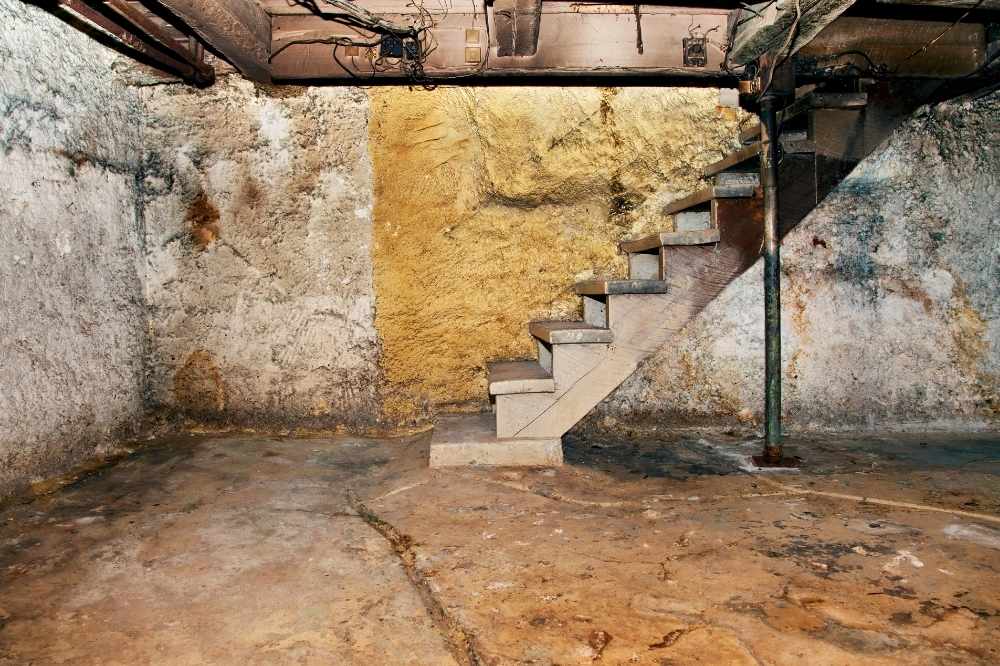
Before you think of basement mold cleaning, you should first understand the causes of mold in basements and how it got there; otherwise, if we don’t know how to prevent mold or treat mold, it will reoccur after sometime.
- Understanding how to identify mold and why it is on basement walls is critical. Do you want to succeed in your attempt to get rid of mold in your basement? If you are determined to defeat mold, then you must first understand the science behind mold. Your unwanted house guest is the result of fungal species that produce spores to reproduce. When these spores, which are invisible to the naked eye, land on something wet, they begin to grow. Mold cannot thrive or survive without moisture. The following are some possible causes of basement mold damage: Mold growth after flooding: A flooded basement is an ideal environment for mold growth. Standing water and damp objects, such as furniture and carpets, can serve as breeding grounds.
- Water leaks: Just like post-flood moisture, leaky basement pipes, appliances, or drains increase your chances of discovering mold.
- High humidity: If the old stereotype of your basement being a damp and dark place holds true, your chances of mold growth will be increased. Humidifiers, air vents, and other steamy devices or mechanisms can all promote mold growth. These are the causes of mold in the basement.
According to the Environmental Protection Agency(EPA), the primary cause of mold on basement walls is moisture. Mold cannot survive without moisture. It only requires a little moisture to proliferate. Mold thrives in basements because they are notoriously dark and damp places. That is why it is essential to identify mold and prevent it.
One effective way to combat mold growth in basements is through professional restoration services like The Phoenix Restoration. Their expertise in moisture control and mold remediation can ensure a healthier environment for your home.
How to Identify Mold in Basement?
Knowing your opponent is the first step toward victory. So, it’s very important for us to know how to identify mold. Certain mold colonies are more dangerous to your health than others and should be handled by professionals. We’ve narrowed it down to the most likely culprits because tens of thousands of fungi species can produce mold spores. Compare your mold to the following 12 fungal genera: Let’s see how to get rid of mold in a basement and what methods are available for basement mold cleaning. Mold in basement can be identified by;
01. Locating it, Visually

You can identify mold in your basement by turning on the work light and scanning for its signs, such as areas that resemble burn marks, dirty spots, or tiny black speckles. A visual inspection of the building and documentation of the area(s) covered by visible mold growth is the first step in any mold investigation. This necessitates the ability to distinguish mold growth from dirt, stains, or other discolourations. Mold investigators may discover discolourations or stains that they suspect are caused by mold growth, only to receive a lab report that no mold growth occurred. Mold Inspection, Identification, and Control, an online course, can help you master indoor mold investigation and laboratory result interpretation for basement mold cleaning.
02. Smelling the Air for Mold on Basement Walls

The first indicator of mold in a basement is the smell. So, you’ve got mold in your basement if you can smell a musty, earthy, or dusty odour there. Mold in your basement smells like dirty socks or wet wood; its smell is not appealing at all.
03. Identifying Areas Known to Harbour Mold
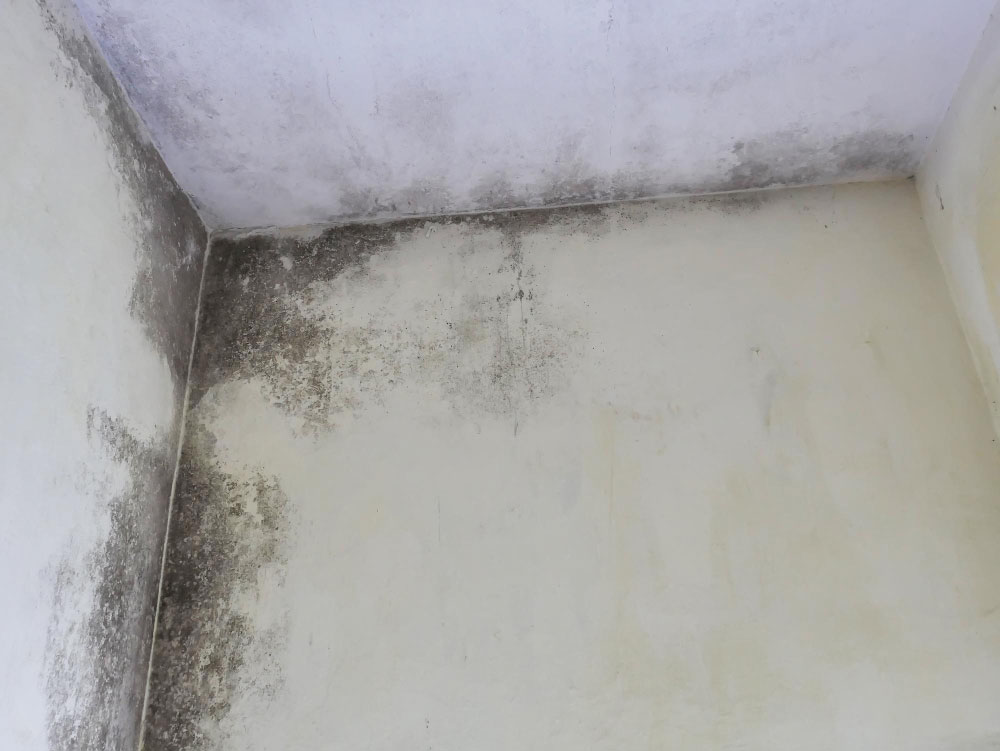
If you suspect that you’ve smelt mold, go and look for it. Examine the areas around dryer vents, under sinks, around water supply pipes, around sump pumps, in the ceiling, near bathroom exhaust vents, inside wall cavities, and water drainage lines.
04. Probing the Area
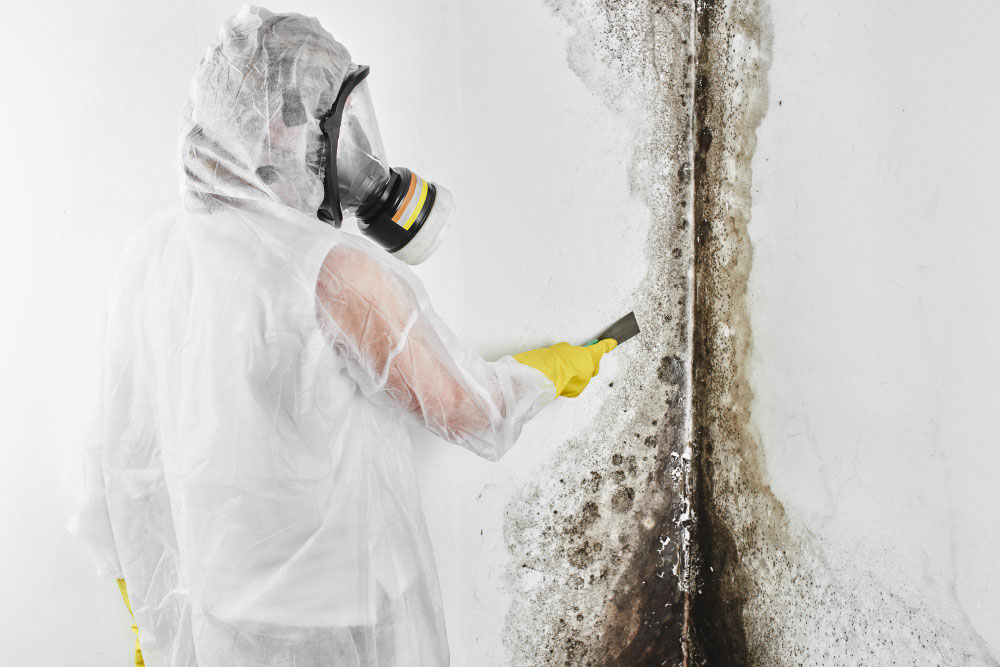
Gently push a screwdriver into wood or drywall areas where mold growth is suspected. If the screwdriver easily pierces the surface, and flakes, it’s a mold.
05. Use of Bleach to Test Mold

- Wondering how basement mold cleaning is done? Okay, follow these steps; Take a glass of water and add one part bleach to ten parts water.
- Mix it well, and then daub a cotton swab in the mixture.
- Then run the swab to the area you suspect to have mold.
- If the area has mildew or mold, it will lighten. However, it won’t change colours if the area is only dirty.
06. Black Spots or Stains
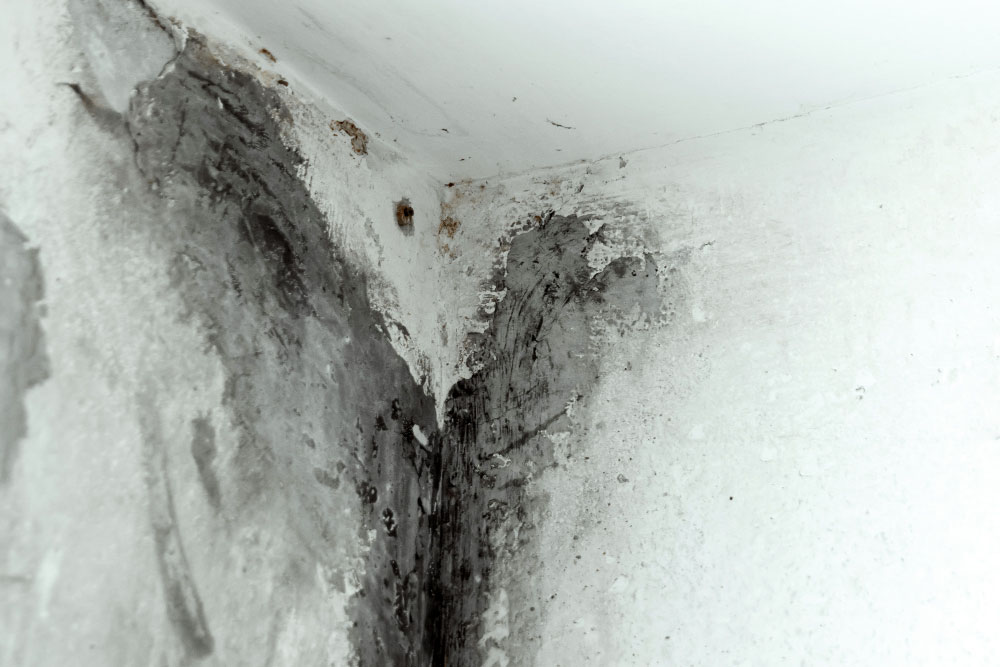
Mold colonies typically manifest as fluffy, velvety, or hairy spots or patches of various colours. This is evident with Penicillium, Aspergillus, and Cladosporium species growing on plaster, wallpaper, paint, damp wood, carpets, and floor coverings. Actively growing mold has hair-like, extensively branching filaments (hyphae) in the early stages of growth, which develop a hairier appearance as the mold matures. This is easily visible with a magnifying glass or a handheld, portable microscope. Mold that is actively growing on basement walls may be soft, slimy, and damp, and it may smear when touched. Inactive or dead mold is dry, powdery, and it easily rubs off the surface, becoming airborne.
07. Peeling Wallpaper or Paint
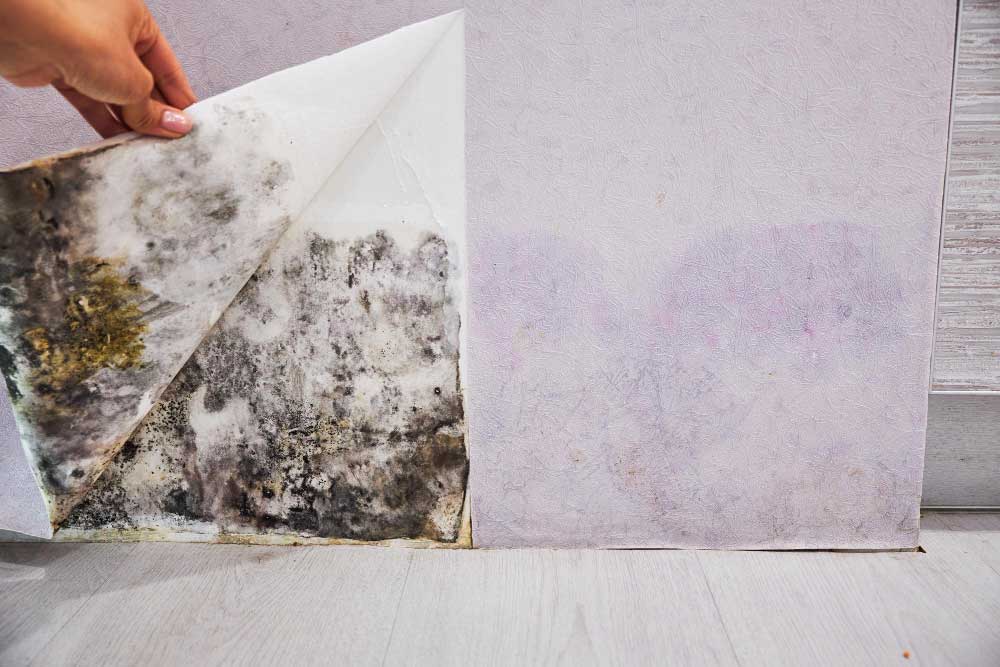
Peeling paint-When paint begins to crack or peel, it is an indication that moisture is accumulating beneath the paint. Unfortunately, mold has often had the opportunity to grow in the wall by the time this is noticed, and by then, mold removal is necessitated.
08. Condensation on Windows and Pipes
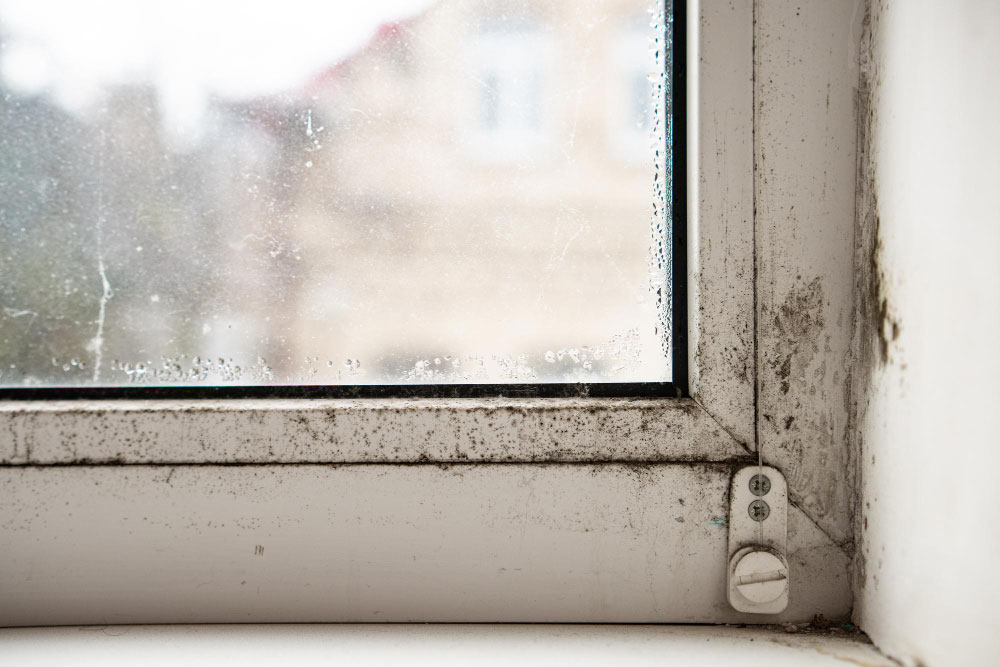
During cold weather, condensation on windows and mildew or surface mold growth on walls, ceilings, and window frames in apartments are common. It’s most common in bathrooms and near windows. Mildew or mold requires the right temperature and moisture to grow. This is usually caused by higher-than-normal humidity levels in an apartment.
Still, if you want to know more about 9 Signs That Your Home Needs Mold Remediation check it out.
How to Get Rid of Mold in Your Basement?
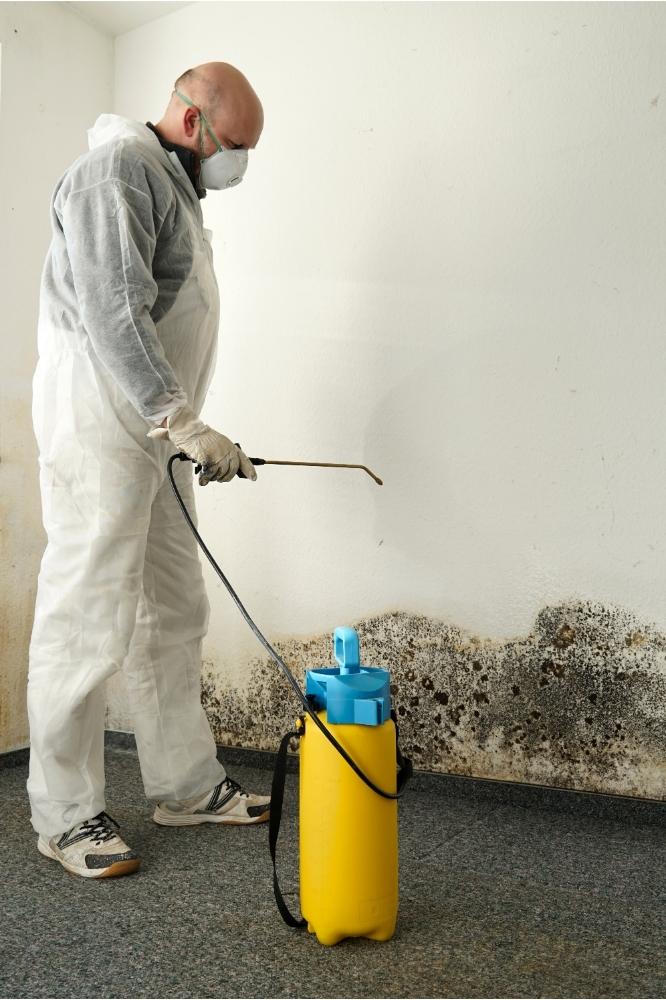
Have you confirmed that you’ve got mold in your basement? If so, follow the guide below. It will take you a few steps at a time until you understand how to treat mold in your basement. Safety Recommendations: Some mold strains are toxic. As a result, you must put on a full range of personal protective gear and seal off the work area. The personal protective gear should include:
- A P100 mask
- Safety glasses
- Hooded disposable coveralls and,
- Latex gloves
What You’ll Need Get Rid of Mold?
Equipment/ Tools

- Sponge
- Screwdriver
- Cotton swabs
- Personal protective equipment
- Glass container
- Dry/wet vacuum
- Work light
Materials

The following materials will be required to remove mold from the basement.
- Duct tape
- Household bleach
- Plastic sheeting
- Garbage bags
- Mold remover
Now that you have gathered all the required tools and materials, follow the below steps to get rid of mold in your basement.
Steps to Get Rid of Mold in Basement
Step 1: Assess the Situation
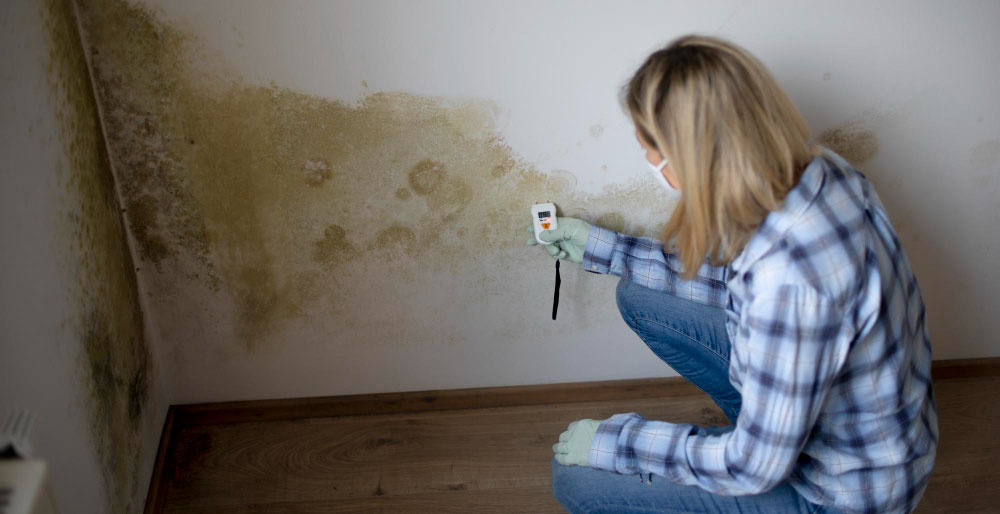
First, determine which basement walls are affected. If the surface is porous (absorbent), prepare to deal with it because the task may be harder than you expected. The spores may have infiltrated deeper than the surface, which means that even scrubbing the mold away will not completely remove the spores.
Step 2: Gear Up

Wear protective gear to avoid being exposed to spores, especially if you have a weakened immune system or severe allergies. Gloves, protective clothing, goggles, and a face mask would help protect you from spore exposure.
Step 3: Ventilate

When working on the basement mold cleaning, you’ll need as much air as possible. So, open the windows/ventilators and doors to your basement. This would allow you to avoid inhaling cleaning product fumes and spores.
Step 4: Prepare the Cleaning Solution
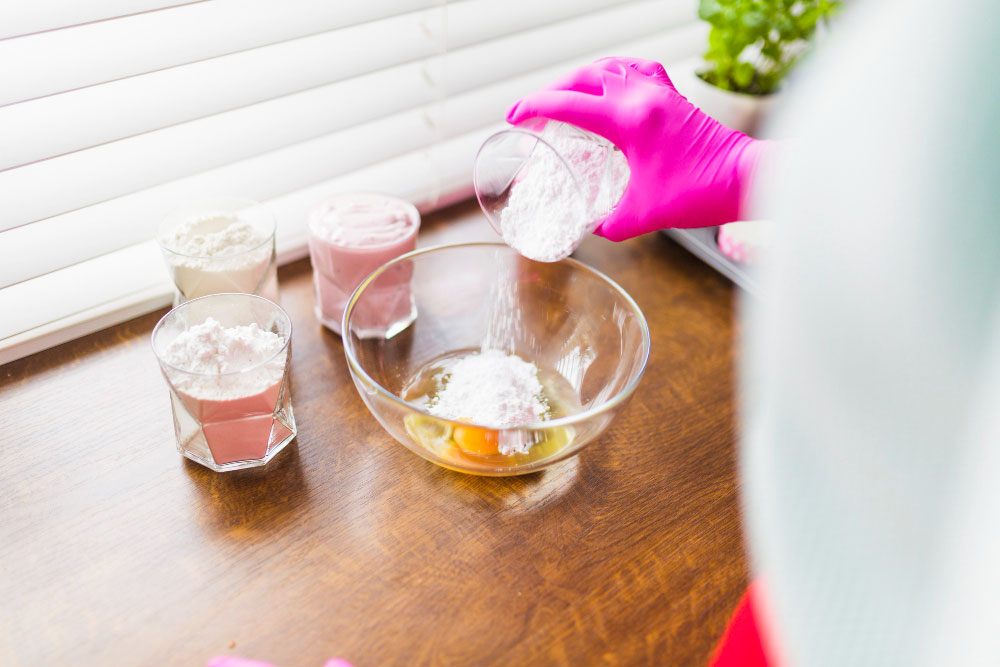
How you prepare the solution would entirely depend on what you’d use. Like the steam cleaners, you only need to fill them with water and switch them on. For the phenolic detergents and mold removers, you need to dilute them according to the manufacturer’s guidelines.
- However, if you’ve decided to use borax, essential oils, and bleach, follow these guidelines; Bleach-Pour one cup of bleach into each gallon of water and mix.
- Essential oil- Combine 25 drops of essential oil in ½ cup of isopropyl alcohol and ½ cup of water.
- Borax-Add one cup of borax to each gallon of hot water and thoroughly mix.
Step 5: Clear the Area

Remove everything that might have been contaminated with mold, including the decorations, carpets, and furniture in the affected area. However, if there are some items worth saving, save them.
Step 6: Clean Mold
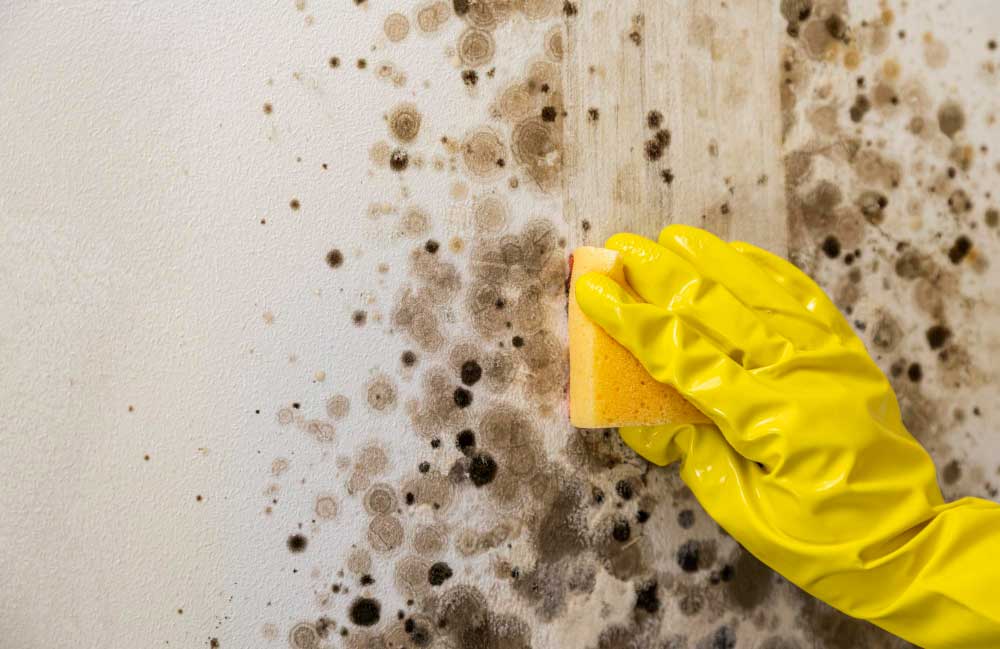
The steps below will come in handy if you are using a homemade solution;
- Apply Cleaning Agent- Spray the solution liberally over the mold and let the phenolic detergents and mold removers sit on the mold undisturbed for about 10-15 minutes.
- Wipe-Using paper towels, wipe the mold’s pieces away and throw them in the trash; the cleaning agent will have loosened the mold to come off without much hustle.
- Repeat- On the affected area, spray your chosen product again. Then, using a sponge, scrub and rinse the surface thoroughly. However, if you have decided to use a steam cleaner, proceed as follows:
- Maximum heat- Turn your steam cleaner to its highest setting.
- Steam mold- Apply steam to the mold and avoid dipping the nozzle into the mold as much as possible as you work.
- Wipe away- Using a paper towel, wipe away the loosened colony.
- Repeat the process until the mold is completely removed.
Step 7: Dry the Area

After scouring the affected area, dry the surface thoroughly. You can use a fan if you think the surface will take a long time to dry.
Step 8: Fix Underlying Cause
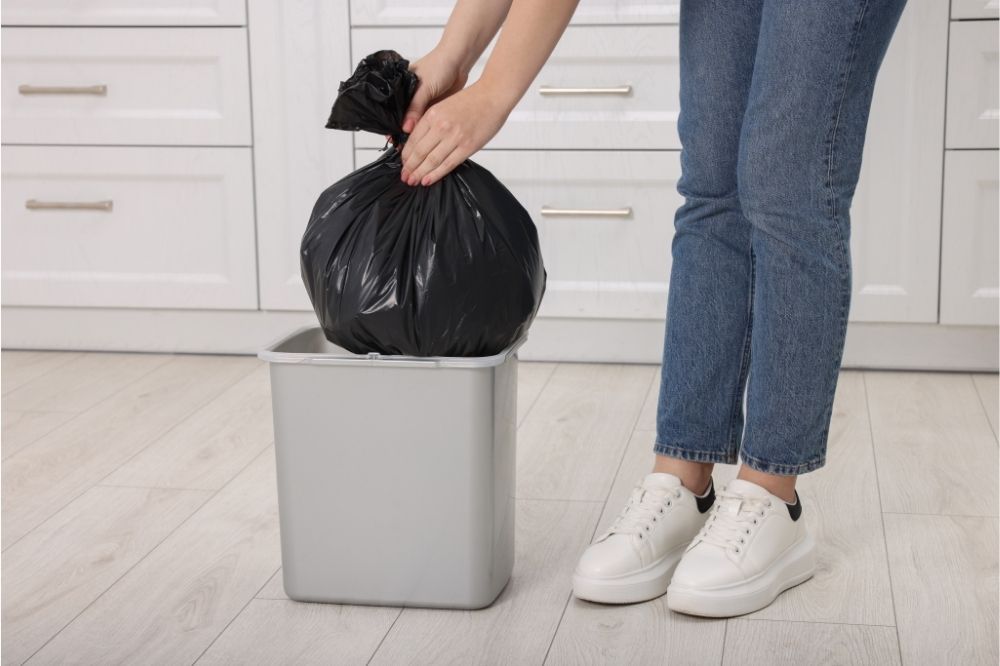
To prevent mold from returning, identify the cause of the mold growth and address the issue once and for all. Otherwise, the mold will reappear. Still having questions about how to get rid of mold from a basement?
How to Prevent Mold in Your Basement?
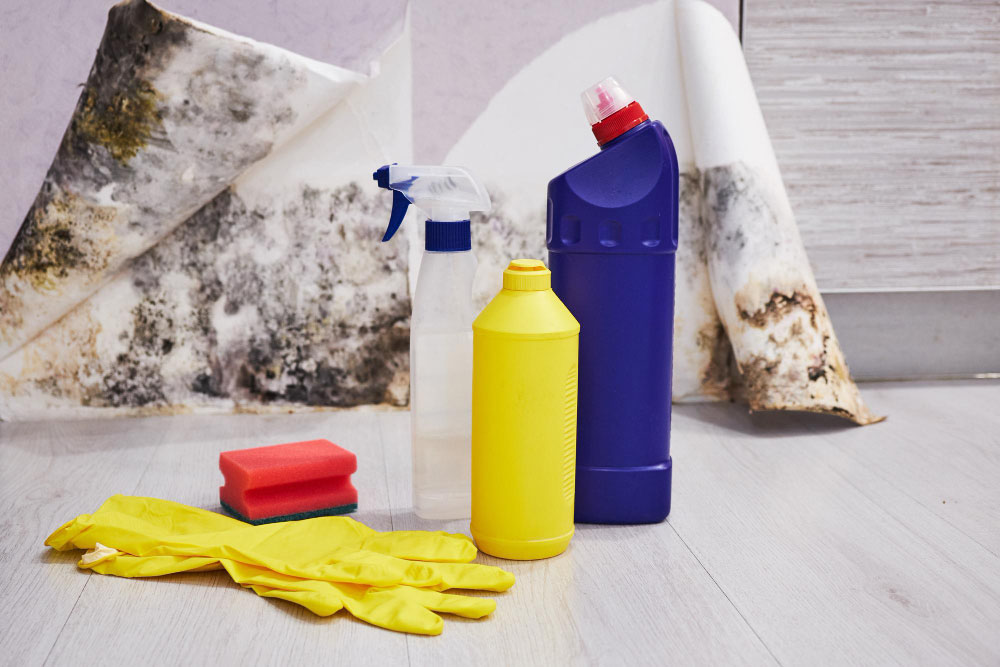
According to Gravesen S, Nielsen PA, Iversen R, Nielsen KF (Author of Micro fungal Contamination of Damp Buildings–Examples of Risk Constructions and Risk Materials), the correlation between dampness and mold growth, house dust mites, and airway problems has been demonstrated and known for several years. As said earlier, many basements are the dampest and darkest of all house rooms, and that’s why mold likes them. However, if you follow these tips exactly, you’ll be able to prevent the mold in the basement from returning.

1. Clear Up– Try to limit the amount of porous surfaces that retain moisture in your basements, such as unsealed wood furniture, thick carpets, and flooring. Throw away any old paper and avoid storing leftovers or dirty dishes in the basement. Getting rid of clutter makes it easier to spot mold growth.

2. Clean– Every time you clean your house, pay special attention to your basement- give it a thorough cleaning, especially in the areas that have been previously affected by mold. And if possible, use a preventive spray to keep mold at bay.

3. Install a Dehumidifier– Install a dehumidifier in your basement. It discourages mold from growing by removing moisture from the air.

4. Ventilate– Increase fresh air circulation in your basement by periodically opening the windows/ventilators or installing an exhaust fan.

5. Frequent Checks– Continue to inspect the mold-affected area in your basement. If you notice any leaks or wet patches, clean them up and address the cause as soon as possible.
Mold can be scary, especially if you have allergies. But does that mean you should flee and abandon your home as a result of it? No, you can’t. You only need to master the tricks of getting rid of it. And the above guide would come in handy.
Bye – Bye Mold
You now know how to remove mold in your basement. Hopefully, you can put things in perspective. Mold is unpleasant, but it does not always require you to pack your belongings and leave your home. With a strong stomach and meticulous basement mold cleaning, small colonies can be handled. If your mold infestation is severe, you should seek professional assistance. The end goal is to make your basement mold-free without putting your health at risk. The most effective way to combat the nefarious fungi is prevention. Keep your basement dry, clean, and well-maintained to the best of your ability.
Before you leave, make sure to check a detailed guide on home remedies to remove mold:
7 Effective Home Remedies To Get Rid Of Mold
FAQs on Getting Rid of Mould in Your Basement
1. What Causes Mould to Grow in Basements?
Mould growth in basements is mainly caused by excessive moisture, water leaks, flooding, poor ventilation, and high humidity levels. Damp, dark spaces create the perfect environment for mould spores to thrive and spread.
2. How Can I Tell If There’s Mold in My Basement?
You can identify mold by musty odours, black or greenish stains on walls, peeling paint, or condensation on windows and pipes. A simple bleach test can also help confirm if a surface is mould-affected.
3. What Is the Best Way to Get Rid of Mold in a Basement?
To remove mold, clean the affected areas using a bleach or borax solution, wear protective gear, ventilate the space, scrub the mold off surfaces, and dry the area completely. Finally, fix the underlying moisture problem to prevent regrowth.
4. Can I Remove Basement Mold Myself, Or Should I Hire Professionals?
Small mold patches can be safely removed with proper cleaning solutions and safety precautions. However, if the infestation is widespread or affects structural materials, it’s best to hire professional mold remediation experts.
5. How Can I Prevent Mold from Returning to My Basement?
Keep your basement dry and well-ventilated, install a dehumidifier, repair leaks promptly, and clean regularly. Avoid clutter and store items off the floor to reduce the chances of moisture buildup and mold recurrence.
Author Bio
Fidelis Kinai – Fidelis Muti possess a bachelor’s in English and Journalism and have over four years of professional experienced writing and proofreading materials for print and online platforms, including newspapers, magazines, websites, blogs, and social media accounts. He also have over three years of experience as a marketing assistant and social media manager.
He is versatile and diligent and will produce exemplary content within time to meet your deadline.
He can deliver most work within 2-3 days; rush orders are accepted whenever possible. He is based in the Kenya but travel often and work for clients all over the world.
References
Gravesen S, Nielsen PA, Iversen R, Nielsen KF. (1999). Microfungal Contamination of Damp Buildings–Examples of Risk Constructions and Risk Materials. Environmental Health Perspectives, Supplements Volume 107, Suppl 3:505-8.Availableat: https://www.researchgate.net/publication/12951873_Microfungal_contamination_of_damp_buildings_-_Examples_of_risk_constructions_and_risk_materials






























